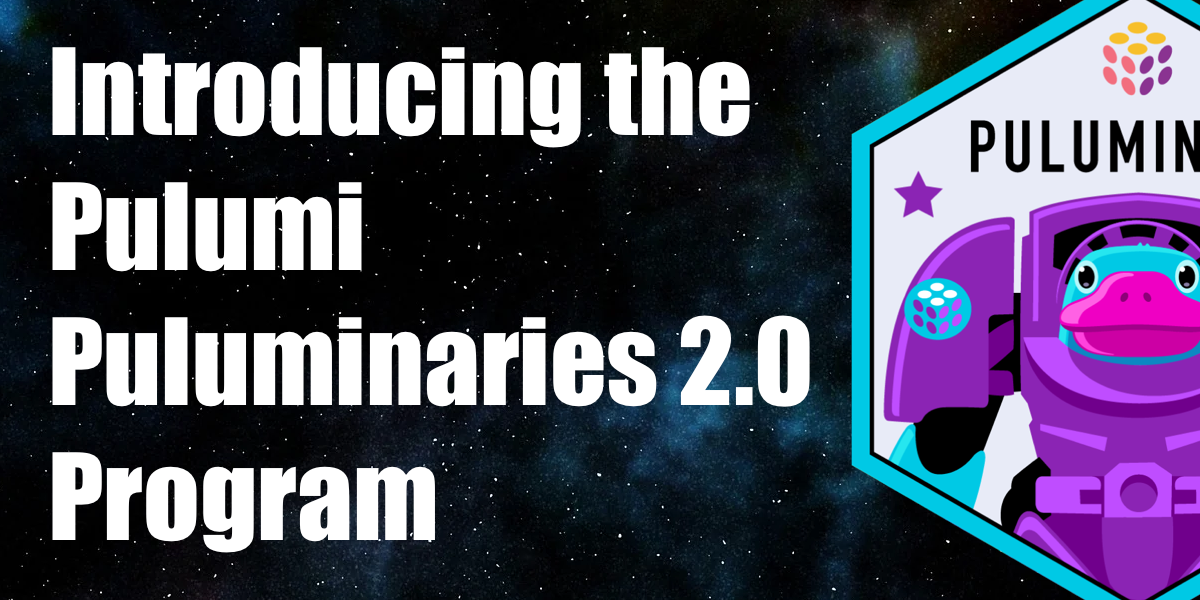Introducing the Pulumi Puluminaries 2.0 Program

We are excited to announce the Pulumi Puluminaries 2.0 Program. This is a fresh and revitalized way to celebrate and support Pulumi’s most passionate community members. Pulumi Puluminaries are individuals who demonstrate leadership in the Pulumi ecosystem by sharing best practices, creating valuable content, and helping fellow practitioners succeed.
Before we dive into what is new, we want to recognize and applaud the incredible achievements of our existing Pulumi Puluminaries. You can check out the great folks currently making a difference in our community on the Pulumi Puluminaries page. Their hard work and dedication have laid a strong foundation for what is next.










